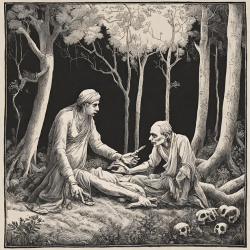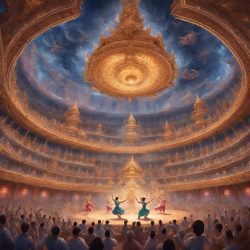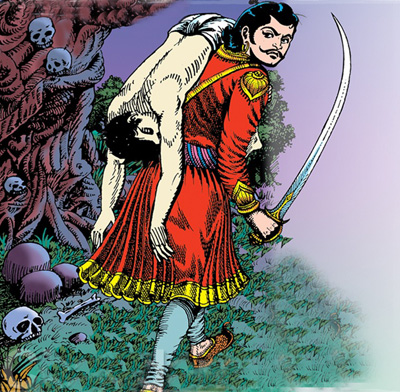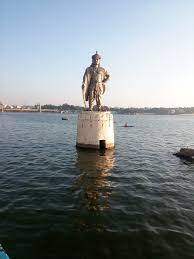
1: Introduction of King-Bhoja | 2: Bhoja’s Discovery: The Throne of Vikram Aditya | 3: “King Vikram Aditya Birth”
Once upon a time, there was a beautiful land called Bharath Varsh and Bharath Khanda means the continent of Bharath, which we now know as India. In this place was a Famous kingdom named Dhara-nagara(modern Dhar) was located, ruled by a wise and brave king named Bhoja an Indian king from the Paramara dynasty. His kingdom was centered around the Malwa region in central India.
King Bhoja was not just any king; all his people loved him because he was kind, and fair, and always thought about their happiness. He was like a caring father to everyone in his kingdom. The enemies were terror even to see him. He was a patron of Pandits, artists, and poets.
Under King Bhoja’s rule, the land prospered, and people lived in peace and harmony. They celebrated every day, and it felt like a festival because the king encouraged them to be joyful and hospitable.
But what made King Bhoja’s kingdom even more extraordinary was his love for knowledge and learning. He had clever scholars, amazing artists, and talented poets in his court. They all loved working for him because he supported and encouraged their talents.
The famous astrologist Varahamihira, the famous author Charakasamhitha, Charaka, and astronomist Aryabhatta were in the court of Bhoja.
One day, something unexpected happened that challenged the peace in the kingdom. It was a test of King Bhoja’s bravery and wisdom. Let’s find out!
2: Bhoja’s Discovery: The Throne of
Vikram Aditya
The Vikram Bethal stories continue…
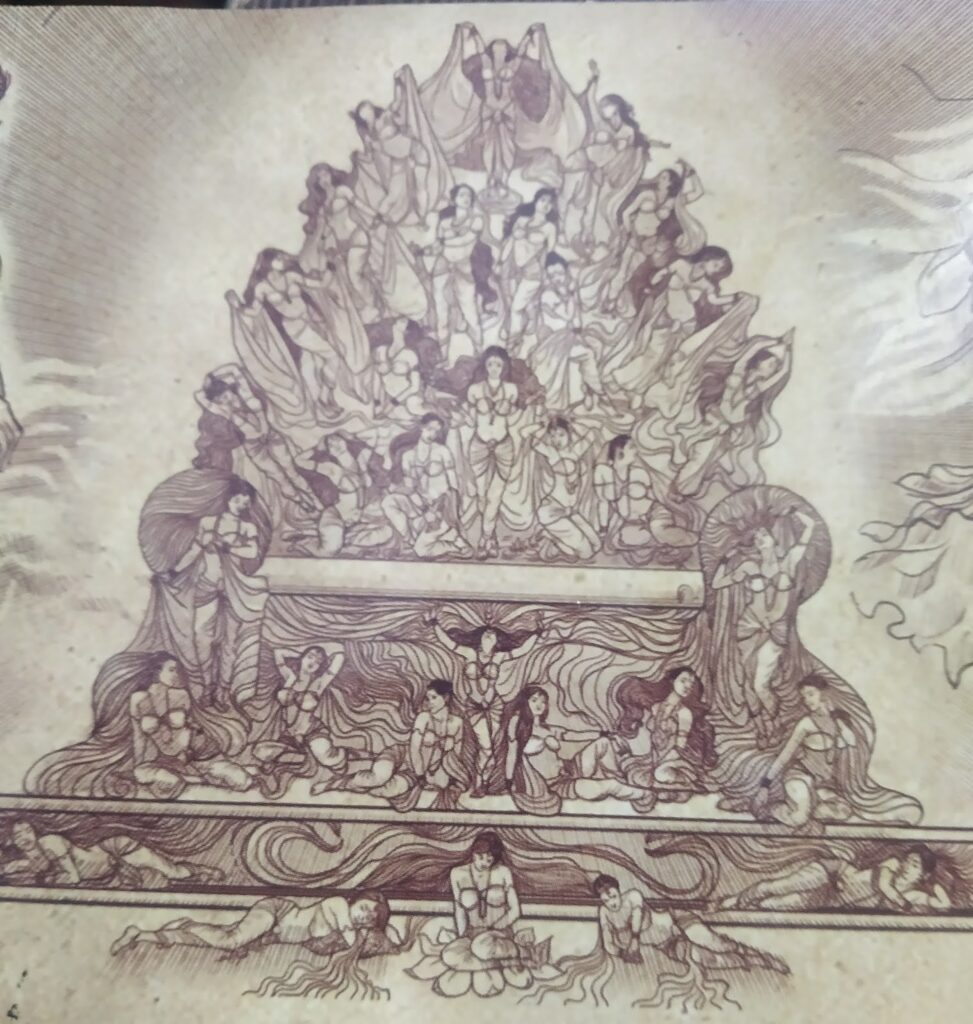
Some people came to him with a problem. Wild animals were causing trouble in their village. They were hurting the people and destroying their farms.
King Bhoja felt sad for his people and decided to help. He asked his wise minister, Buddhi Sagara, to lead a hunting expedition to protect the villagers and their crops from wild animals.
The king and his soldiers went into the forests and fought the wild animals. They defeated the animals with their bravery and strength and made the kingdom safe again.
On their way back to the kingdom. In the middle, they came across a field. All the soldiers are hungry. They stopped at a field where a Brahmin, a wise man, was throwing stones at birds. So the Brahmin kindly offered them food from his field. But suddenly, he got angry and asked them to leave rudely.
This behavior confused the king, and he thought there might be something special about that spot. So, King Bhoja decided to investigate further. Returning to the kingdom. The next day he asked his guards to bring the Brahmin to the court. Upon arriving, the King gave him precious gifts and wealth, and he agreed to allow the digging of the mysterious spot in his field.
They dug the spot, and to their surprise, they found a beautiful golden throne. It was very beautiful. It consisted of nine precious gems. There were thirty-two steps to the throne. At each step, there was an idol of a woman. It was like a magical treasure!
The king knew it was a special find, so he did good deeds for the poor and offered prayers to honor the throne. He brought the amazing throne back to his palace and made his kingdom even more prosperous.
And so, the wonderful throne of Vikramarka became a treasured possession in the court of King Bhoja Raja.
3: “King Vikram Aditya Birth”
Vikram Bethal’s stories continue…
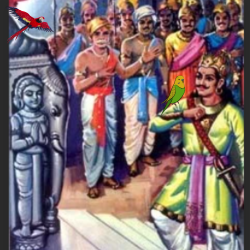
The great king Bhoja Raja performed elaborate worship rituals before attempting to sit upon a magnificent throne. However, to his surprise, the thirty-two idols started laughing. Confused, he asked why they were laughing.
The first idol, named Vinoda Ranjitha, responded, “Your majesty, this is no ordinary throne. Once, King Vikramarka ruled his kingdom from this very seat, alongside his loyal minister Bhatti, for two thousand years with unmatched valor. You are fortunate to have come across it, but before you can sit on the throne, you must possess the qualities of even one percent of the great Vikramarka. Only then will it be suitable for your kingdom. Otherwise, attempting to sit on it would lead to severe problems.”
Bhoja was taken aback and asked the idols to share the story of Vikramarka, his reign, and his greatness, including his life journey.
Vinoda Ranjitha, the first idol, began narrating the story of Vikramarka.
Long ago, the great Maharshi Narada was journeying, chanting “Narayana Narayana” along the way. He encountered a demi-god named Sravyaparna, also known as Gandharva, who enjoyed himself with his wife and paid no attention to Narada, the great guru of the universe. He did not respect him and even did not see. Narada cursed him to become a demon and live on Earth. Feeling extremely sorry and regretful, the Gandharva begged for forgiveness. Narada was touched by his sincere remorse and agreed to give him a chance at redemption. The condition was that the Gandharva could only be redeemed if he shared knowledge with someone worthy who truly deserved a real learning seeker.
Thus, the Gandharva became a demon, taking life in a big peepal tree within a forest on Earth.
In Nandipura, a scholarly pandit named Chandra Varma lived, deeply eager to increase his knowledge more and more. Searching for a great guru, he came into the same forest where the demon was living but couldn’t find a suitable guru and felt depressed. Exhausted, he rested beneath the peepal tree, where the demon Gandhara appeared before him, scaring the pandit.
However, instead of causing harm, the demon offered to teach him what he knew, explaining that he would write his teachings on peepal leaves. He set a challenging condition for the pandit to learn without eating or sleeping for six months. Chandra Varma accepted the offer. After six months of dedicated learning, the curse was lifted, and the demon returned to his true form, blessing Chandra Varma before vanishing.
Chandra Varma didn’t eat anything for six months, and it made him weak. Carrying a bunch of peepal leaves, he came to Kanyakapura and slept outside a house. The house belonged to a kind and beautiful courtesan named AlamKaravalli, who noticed him.
Seeing his condition, she called Vaidya and followed his advice to take care of Chandra Varma continuously day and night, saving his life. Chandra Varma recovered and survived.
Later, AlamKaravalli told Chandra Varma that she wanted to marry him. The Brahmin was shocked and refused to marry her. Feeling upset, she approached the king with the matter. King Suddhavarma after hearing both sides, the wise king consulted the Pandits.
They advised that Chandra Varma could marry AlamKaravalli only after marrying brides from each of the four castes – a Brahmin, a Kshatriya, a Vaisya, and a Sudra. AlamKaravalli is a Sudra Kanya. So as a solution for this, he has to marry first a Brahmin Kanya, a Kshatriya Kanya, a Vaisya Kanya, and then a Sudra Kanya.
King Suddhavarma, impressed by Chandra Varma’s wisdom and capabilities, King Suddhavarma offered him his daughter. The royal purohit convinced them to give him his daughter too.
Thus, Chandra Varma married the daughter of Royal Purohit, Kalyani first. Later he married Chitralekha, the King’s daughter, Komalangi, the daughter of a merchant, and lastly Alamkaravalli. All of them were happy.
As time passed, Chitralekha gave birth to Vikramarka, and Komalangi gave birth to Bhatti. Kalyani was blessed with Pallavarshi, and AlamKaravalli gave birth to Bhartruhari.
King Suddhavarma aged old, decided to pass his kingdom on to Chandra Varma, he ruled with great wisdom and efficiency. As years went by, Chandra Varma also grew old and he called his four sons to reveal a significant truth, “I married all three of my wives because of Alamkaravalli, and she holds the position of my first wife. Her son, Bhartruhari, shall succeed me as the next king. The three of you shall support and assist him in his reign.”
After Chandra Varma’s death, Bhartruhari became the king, while Bhatti and Vikramarka became princes, and Pallavarshi got the role of minister.
King Bhartruhari led the kingdom to prosperity and greatness.

